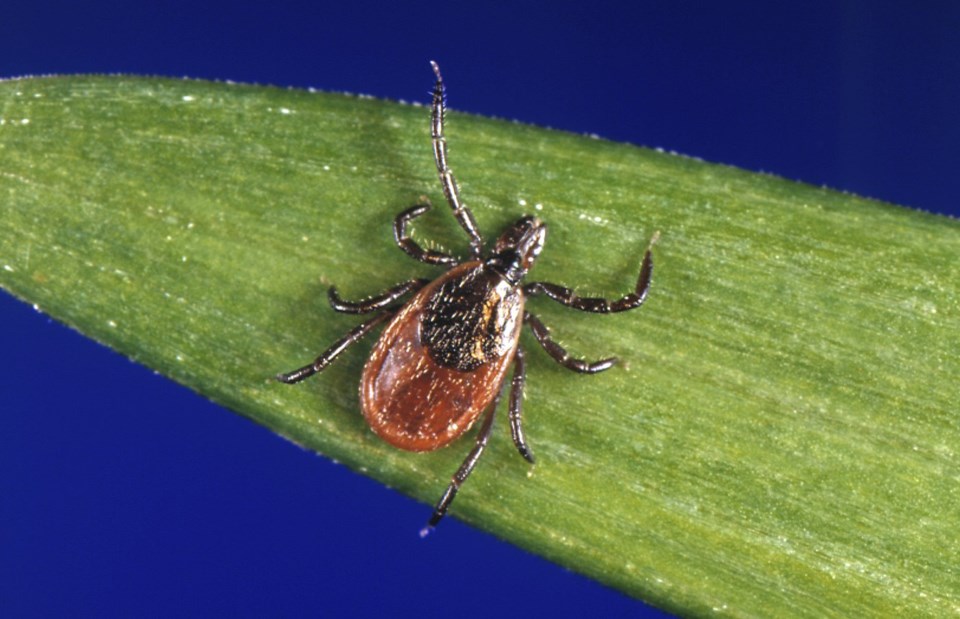WASHINGTON (AP) — Ticks can be active in any season and it's important to check for and remove the bloodsuckers as quickly as possible — especially after you've been outside hiking, gardening or enjoying nature.
“Humans are outside more in summer so we hear about more tick infections,” said Sam Telford, an infectious diseases expert at Tufts University. But he urges caution year-round because “every season is tick season.”
While tick populations vary a lot regionally, some Northeastern states including Maine, Massachusetts and Rhode Island are seeing “above average” numbers of American dog ticks this year, said Telford.
And New York state is seeing a higher number of reported deer tick bites this year than last year, said Saravanan Thangamani, who studies tick-borne diseases at SUNY Upstate Medical University.
How ticks can spread disease
Ticks, like mosquitos, need to feed on blood. But instead of a quick prick, they are slow feeders – with hooked mouth parts that attach into the skin of deer, rabbits, dogs and people.
There are many different species of ticks found globally and only some spread germs that can make people sick. A main worry is blacklegged ticks, also called deer ticks, which can spread Lyme disease. Once found mainly in New England and pockets of the Midwest, the ticks are now present over a wider range.
A tick bite doesn't always lead to illness. “If you remove a tick within 24 hours of attachment, it’s fairly unlikely that you will get infected,” said Telford.
How to check for ticks
Ticks are usually found low to the ground, in leaf litter or grassy areas.
Check your clothing for ticks and do a full-body check including under the arms and behind ears, knees and hair.
“If you’re out all day long, try to do a quick check for ticks every few hours,” said Bobbi Pritt at the Mayo Clinic. “When you go back inside, take a shower. That will wash off any unattached ticks, and you’re also more likely to spot any other ticks."
Use tweezers to remove the tick and grasp it as close to the skin as possible to pull from the head. If you don’t have them handy, you can also use your fingernails, the edge of a credit card or any semi-sharp object.
How to keep ticks away
The best approach is to minimize tick exposure altogether.
Bug sprays containing ingredients such as DEET can be sprayed on exposed skin to ward off ticks and mosquitos, said Telford.
Wear long sleeves and pants, and you can also spray clothing with repellents containing permethrin, a chemical similar to a natural ingredient in chrysanthemums that makes ticks avoid the flowers.
Protect your pets from ticks
Don’t forget to pay attention to outdoor pets. Medications can prevent fleas and ticks from attaching to a dog's skin. But it’s still a good idea to check the fur after being outside.
“Wherever pets can’t easily groom themselves, that’s where the ticks will be – on the ears, around the muzzle area, under the collar, between the toes,” said Thangamani.
Dogs and cats roaming outdoors can also bring ticks into the house.
“If pets bring ticks in, a tick can live in the house for months until it finds its next blood meal,” which could be another household member, he said.
What to do after a tick bite
After removing the tick, keep an eye on the skin around the bite. If a rash or flu-like symptoms appear within several days or weeks, see a doctor.
The Centers for Disease Control and Prevention does not recommend tick testing because results may not be reliable.
___
The Associated Press Health and Science Department receives support from the Howard Hughes Medical Institute’s Science and Educational Media Group and the Robert Wood Johnson Foundation. The AP is solely responsible for all content.
Christina Larson, The Associated Press



